Related Research Articles
Electronic music is a genre of music that employs electronic musical instruments, digital instruments, or circuitry-based music technology in its creation. It includes both music made using electronic and electromechanical means. Pure electronic instruments depended entirely on circuitry-based sound generation, for instance using devices such as an electronic oscillator, theremin, or synthesizer. Electromechanical instruments can have mechanical parts such as strings, hammers, and electric elements including magnetic pickups, power amplifiers and loudspeakers. Such electromechanical devices include the telharmonium, Hammond organ, electric piano and the electric guitar.
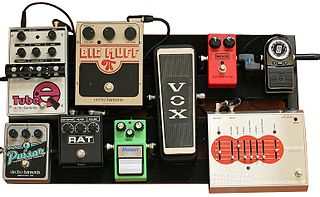
An effects unit or effects pedal is an electronic device that alters the sound of a musical instrument or other audio source through audio signal processing.
Subtractive synthesis is a method of sound synthesis in which partials of an audio signal are attenuated by a filter to alter the timbre of the sound. While subtractive synthesis can be applied to any source audio signal, the sound most commonly associated with the technique is that of analog synthesizers of the 1960s and 1970s, in which the harmonics of simple waveforms such as sawtooth, pulse or square waves are attenuated with a voltage-controlled resonant low-pass filter. Many digital, virtual analog and software synthesizers use subtractive synthesis, sometimes in conjunction with other methods of sound synthesis.

A vocoder is a category of speech coding that analyzes and synthesizes the human voice signal for audio data compression, multiplexing, voice encryption or voice transformation.
Free improvisation or free music is improvised music without any rules beyond the logic or inclination of the musician(s) involved. The term can refer to both a technique and as a recognizable genre in its own right.
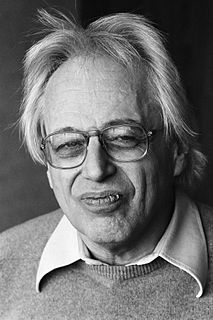
György Sándor Ligeti was a Hungarian-Austrian composer of contemporary classical music. He has been described as "one of the most important avant-garde composers in the latter half of the twentieth century" and "one of the most innovative and influential among progressive figures of his time".

Pauline Oliveros was an American composer, accordionist and a central figure in the development of post-war experimental and electronic music.
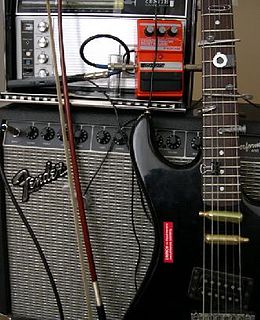
In music, extended technique is unconventional, unorthodox, or non-traditional methods of singing or of playing musical instruments employed to obtain unusual sounds or timbres.
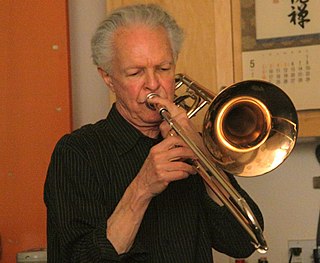
Stuart Dempster is a trombonist, didjeridu player, improviser, and composer.
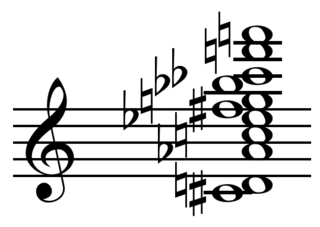
In musical composition, a sound mass(also sound collective, sound complex, tone shower, sound crowd, or cloud) is the result of compositional techniques, in which, "the importance of individual pitches", is minimized, "in preference for texture, timbre, and dynamics as primary shapers of gesture and impact", obscuring, "the boundary between sound and noise".
Continuum for harpsichord is a musical composition by György Ligeti composed in 1968, and dedicated to the contemporary harpsichordist, Antoinette Vischer. The composer describes the conception and result of its technique:
I thought to myself, what about composing a piece that would be a paradoxically continuous sound, something like Atmosphères, but that would have to consist of innumerable thin slices of salami? A harpsichord has an easy touch; it can be played very fast, almost fast enough to reach the level of continuum, but not quite. As the string is plucked by the plectrum, apart from the tone you also hear quite a loud noise. The entire process is a series of sound impulses in rapid succession which create the impression of continuous sound.
Loren Rush is a U.S. composer.

The San Francisco Tape Music Center, or SFTMC, was founded in the summer of 1962 by composers Ramon Sender and Morton Subotnick as a collaborative, "non profit corporation developed and maintained" by local composers working with tape recorders and other novel compositional technologies, which functioned both as an electronic music studio and concert venue. Composer Pauline Oliveros, artist Tony Martin and technician William Maginnis eventually joined the SFTMC.
Meditation music is music performed to aid in the practice of meditation. It can have a specific religious content, but also more recently has been associated with modern composers who use meditation techniques in their process of composition, or who compose such music with no particular religious group as a focus. The concept also includes music performed as an act of meditation.
Andrew Deutsch is a sound artist who also teaches at the New York State College of Ceramics at Alfred University.

A synthesizer is an electronic musical instrument that generates audio signals. Synthesizers typically create sounds by generating waveforms through methods including subtractive synthesis, additive synthesis and frequency modulation synthesis. These sounds may be altered by components such as filters, which cut or boost frequencies; envelopes, which control articulation, or how notes begin and end; and low-frequency oscillators, which modulate parameters such as pitch, volume, or filter characteristics affecting timbre. Synthesizers are typically played with keyboards or controlled by sequencers, software or other instruments, and may be synchronized to other equipment via MIDI.

Harald Bode was a German engineer and pioneer in the development of electronic musical instruments.
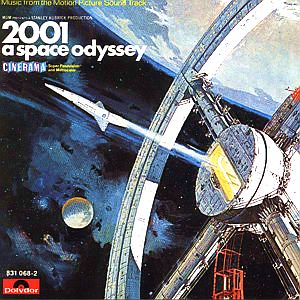
2001: A Space Odyssey is a soundtrack album to the film of the same name, released in 1968. The soundtrack is known for its use of many classical and orchestral pieces, and credited for giving many classical pieces resurgences in popularity, such as Johann Strauss II's 1866 Blue Danube Waltz, Richard Strauss' symphonic poem Also sprach Zarathustra, and György Ligeti's Atmosphères. The soundtrack has been re-issued multiple times, including a digitally remastered version in 1996.

The Studio for Electronic Music of the West German Radio was a facility of the Westdeutscher Rundfunk (WDR) in Cologne. It was the first of its kind in the world, and its history reflects the development of electronic music in the second half of the twentieth century.
Artikulation is an electronic composition by György Ligeti. Composed and notated in January and February 1958, the piece was prepared and recorded on magnetic tape from February to March with the assistance of Gottfried Michael Koenig and Karlheinz Stockhausen's assistant, Cornelius Cardew, at the Studio for Electronic Music of the West German Radio (WDR) in Cologne. The piece consists of various types of sounds, "in conditions of aggregation." It "can be heard as a conversation without words". Ligeti explains in notes to the listening score :
The piece is called 'Artikulation' because in this sense an artificial language is articulated: question and answer, high and low voices, polyglot speaking and interruptions, impulsive outbreaks and humor, charring and whispering.
References
- ↑ Von Gunden (1983) , pp. 26–27
- ↑ Von Gunden (1983)
- ↑ Von Gunden (1983) , pp. 26–28
- ↑ Von Gunden (1983) , pp. 29–30
Sources
- Von Gunden, Heidi (1983). The Music of Pauline Oliveros. ISBN 0-8108-1600-8.
